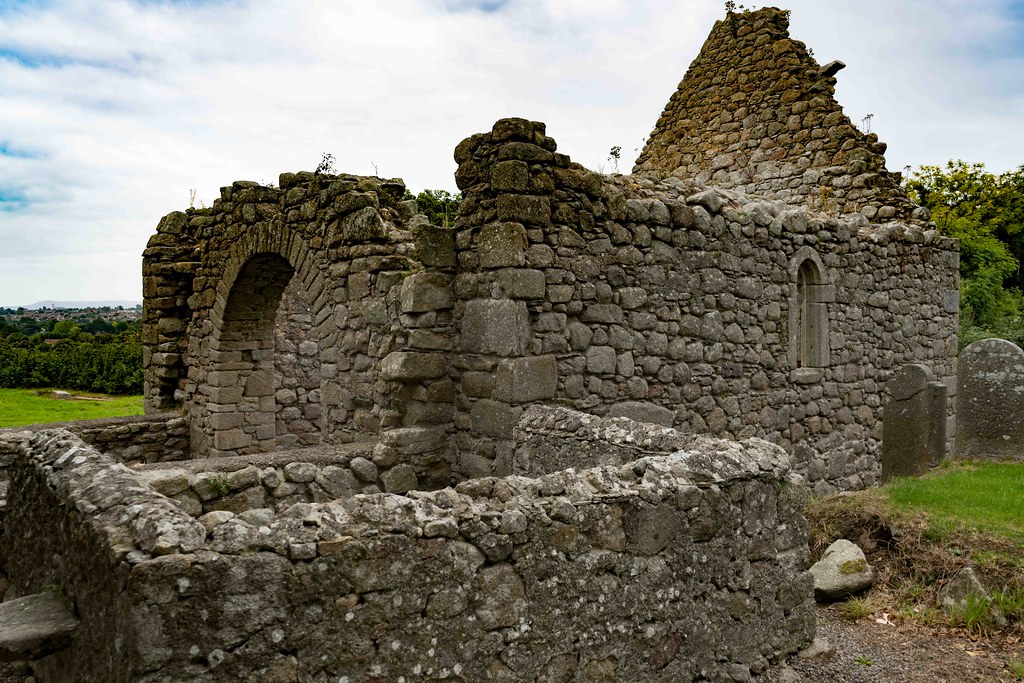
Custom Search
THE GREEN MENU OPTIONS ARE MOBILE FRIENDLY AND ARE FASTER SO THEY ARE RECOMMENDED. THE RED MENU OPTIONS ARE SOMEWHAT SLOWER DEPENDING ON YOUR DEVICE OR BROWSER AND ARE MORE SUITABLE FOR DESKTOPS AND LAPTOPS. THE BLUE OPTIONS ARE PAGE LINKS AND WILL BE PHASED OUT GOING FORWARD
TULLY CHURCH AND THE LAUGHANSTOWN CROSSES [SEPTEMBER 2015]
The date of the church at Tully is unknown, but it may be from the ninth century or earlier and is thought to be of Danish origin some accounts claim that it was founded by St.Brigid. The unusually larger chancel was added to the nave during the early 13th century and has a rounded arch and two rounded headed east windows.
The nave has disappeared, the stones probably taken by the local farmers for building over the years. Scholars who have studied the history of Tullow say that the founder was not the famous St.Brigid of Kildare but another saint of the same name. The church was in use up to about 1615. It came under the authority of Christchurch Cathedral who supplied clergy to keep it going. It was reported to be in good condition when inspected in 1615, but according to a report in 1630 had been badly damaged in recent storms. After that it was abandoned and fell into ruin. The parish was united with Monkstown, together with Kill, Dalkey and Killney. And parishioners of Tully had to go to Monkstown.
Tully means hillock and the church in on an elevated position that would have been a good centre for the local farming community. Its full name was Telach-na-nun ecspop (Tullow of the bishops) and it must have been an important venue if bishops met there. There is alocal legend that seven bishops started out from there to visit St Brigid at Kildare. Elsewhere these bishops are mentioned as the “Seven Bishops of Cabinteely”
The nave has disappeared, the stones probably taken by the local farmers for building over the years. Scholars who have studied the history of Tullow say that the founder was not the famous St.Brigid of Kildare but another saint of the same name. The church was in use up to about 1615. It came under the authority of Christchurch Cathedral who supplied clergy to keep it going. It was reported to be in good condition when inspected in 1615, but according to a report in 1630 had been badly damaged in recent storms. After that it was abandoned and fell into ruin. The parish was united with Monkstown, together with Kill, Dalkey and Killney. And parishioners of Tully had to go to Monkstown.
Tully means hillock and the church in on an elevated position that would have been a good centre for the local farming community. Its full name was Telach-na-nun ecspop (Tullow of the bishops) and it must have been an important venue if bishops met there. There is alocal legend that seven bishops started out from there to visit St Brigid at Kildare. Elsewhere these bishops are mentioned as the “Seven Bishops of Cabinteely”
SORRY FOR THE DELAY


